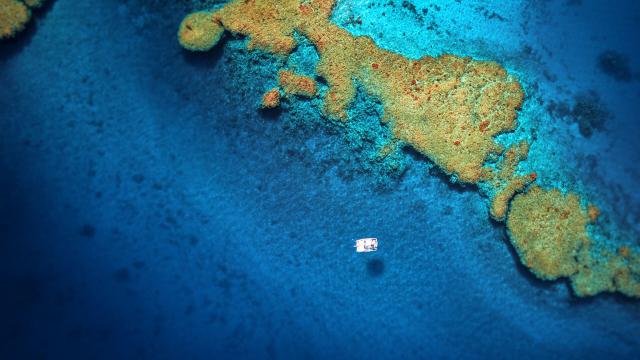 Catamaran cruise in Hienghène
Catamaran cruise in Hienghène Catamaran cruise in Hienghène
Catamaran cruise in Hienghène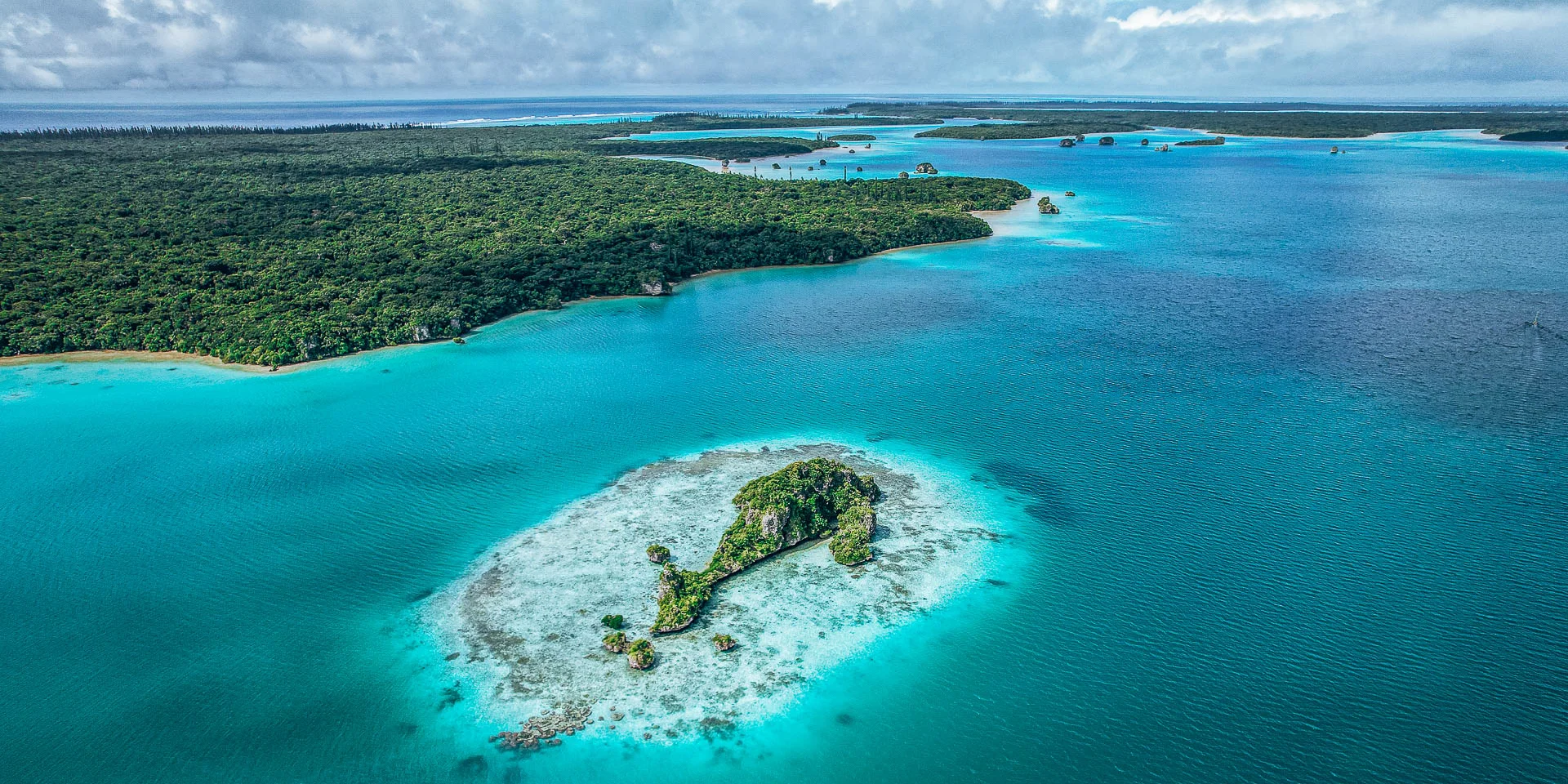 Upi Bay, Isle of Pines
Upi Bay, Isle of Pines Catamaran cruise in Hienghène
Catamaran cruise in Hienghène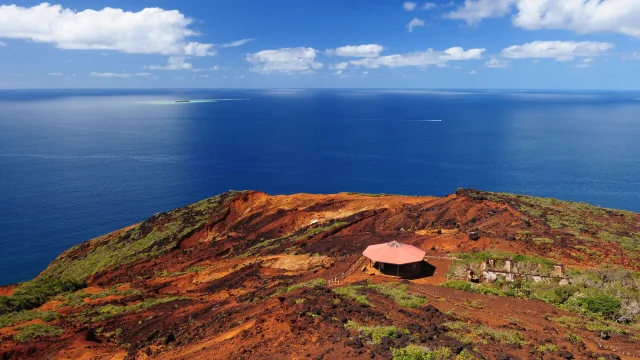 Cap N'dua in the Great South
Cap N'dua in the Great SouthLocated at the southernmost tip of Grande Terre, the Great South Lagoon forms a crescent divided into two distinct areas: the eastern section and the southern horn. This region is home to numerous rare and endangered species, including humpback whales, green turtles, and dolphins. The islets of the Southern Horn also host an incredible diversity of seabirds that nest in this pristine environment.
The islets of the Great South Lagoon can be explored on a multi-day catamaran journey, offering the chance to walk on the white sands of these uninhabited islands, such as Ouen Islet, Mato Islet, and Ua Islet. One of the lagoon’s most iconic sites is Upi Bay on the Isle of Pines. For a truly breathtaking perspective, you can also take to the skies with a microlight or helicopter flight.
Stretching from Bourail to Sarraméa, passing through La Foa, Farino, and Moindou, this region features a narrow lagoon and four marine protected areas: Ouano, La Roche Percée, Île Verte, and Poé. Known for its rich biodiversity, the area is home to exceptional habitats, including coral reefs, mangroves, and seagrass beds, as well as one of New Caledonia’s largest concentrations of dugongs.
La Roche Percée beach is also a vital nesting site for bighead turtles, hosting between 10% and 20% of the Pacific population, according to the Conservatoire d’espaces naturels de Nouvelle-Calédonie (Natural Sites Conservatory of New Caledonia). If you’re heading out on the lagoon, be sure to check with local tour operators or visit the reception desk at the Deva Domain for guidance.
Other remarkable sites in the region include the Poé Fault, a popular diving spot, the scenic bay of Moindou, and La Foa’s extensive mangrove-lined coastline. For those who prefer exploring on land, the Great Ferns Park offers a stunning protected area filled with lush vegetation and hiking trails.
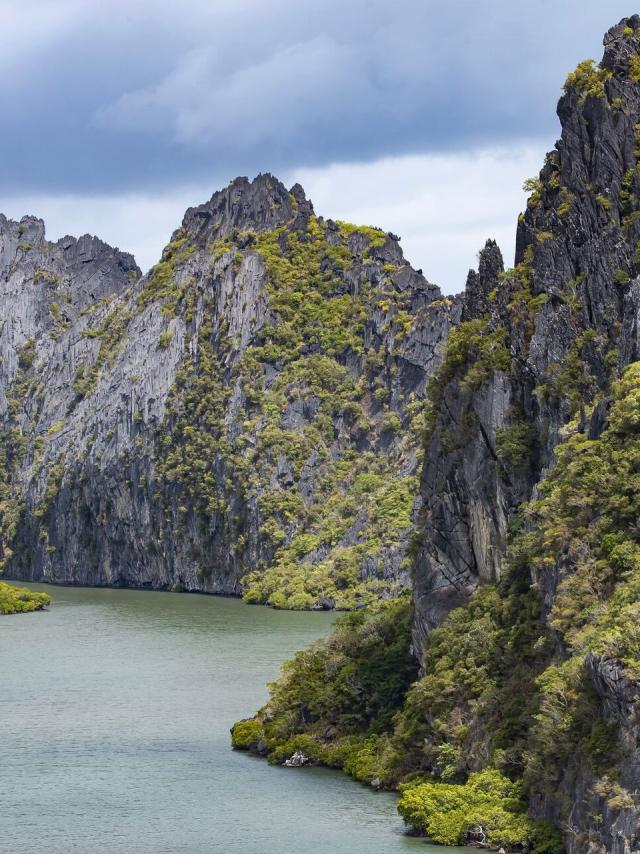 Linderalique rocks, Hienghène
Linderalique rocks, Hienghène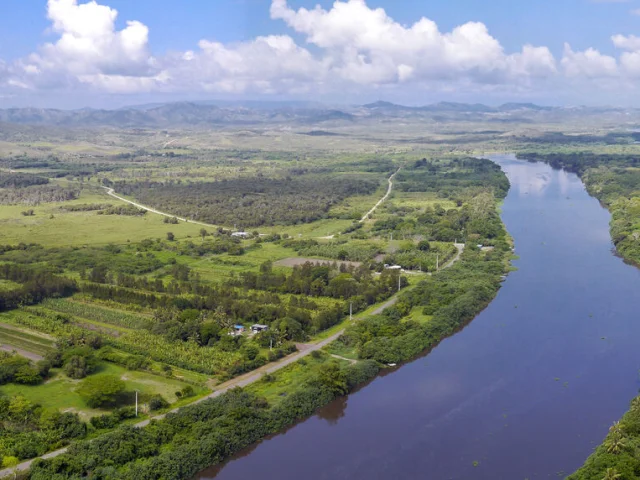 The Diahot river
The Diahot riverRenowned for its striking rock formations, including the famous Hen and Sphinx, the Hienghène area boasts pristine seabeds and a remarkable variety of marine habitats within a short distance. This region is a paradise for diving and snorkelling enthusiasts, offering the chance to encounter iconic species such as dugongs, turtles, manta rays, sea snakes, Napoleon wrasse, and diverse seabirds.
Hienghène is also a key nesting site for green turtles, a nursery for humpback whales, which migrate to New Caledonia’s warm waters to give birth and breed from mid-July to mid-September, and an important breeding ground for sharks.
Further north, in the commune of Ouégoa, the Diahot estuary is home to New Caledonia’s most extensive mangrove system. Visitors can explore this stunning ecosystem by taking a boat trip along the river, offering a unique perspective on its rich biodiversity.
Nestled in the heart of the Coral Sea Natural Park, this remarkable area consists of four pristine atolls. Two of them are recognised as significant breeding grounds for seabirds and green turtles, which come here in large numbers to lay their eggs. Unlike other UNESCO-listed areas in New Caledonia, the terrestrial parts of these islets are also included in the World Heritage site designation.
Exploring the atolls on a multi-day catamaran or yacht cruise offers a unique opportunity to observe the rich birdlife, including terns, gannets, and frigatebirds, in their natural habitat. Part of the region is also classified as a strict nature reserve, ensuring its protection.
This natural treasure is both an extraordinary opportunity for visitors and a shared responsibility. Preserving these fragile ecosystems is a duty that falls not only on the authorities and local communities but also on tourists. Visitors are encouraged to respect and protect these exceptional sites for future generations to enjoy.
Located off the coast of the Belep Islands, the Great North Lagoon is one of the most pristine and well-preserved lagoons in New Caledonia. Covering more than a third of the total lagoon area in the territory, it boasts an exceptional marine ecosystem. The waters are teeming with a rich diversity of fish, including the striking humphead parrotfish, as well as a wide variety of molluscs.
This untouched marine sanctuary offers a glimpse into the breathtaking biodiversity of New Caledonia’s reefs, making it a true paradise for divers, snorkellers, and nature lovers.
This area consists of two atolls: Ouvéa, the only inhabited atoll in New Caledonia (850 km²), and Beautemps-Beaupré, a smaller atoll with minimal landmass (120 km²).
Ouvéa is home to the Lékiny and Nijmex sites, which contain 1% of New Caledonia’s total mangrove forests. Lined with coconut groves, these mangroves are teeming with crabs and shrimp, easily spotted along the shoreline. The Ouvéa Lagoon is also rich in marine life, including manta rays (most commonly seen between September and October), Napoleon wrasse, and sharks.
Among the must-visit sites are the Northern and Southern Pléiades, best explored on a boat trip with snorkelling. These pristine islets are also important nesting sites for green turtles, making them a key part of the region’s natural heritage.
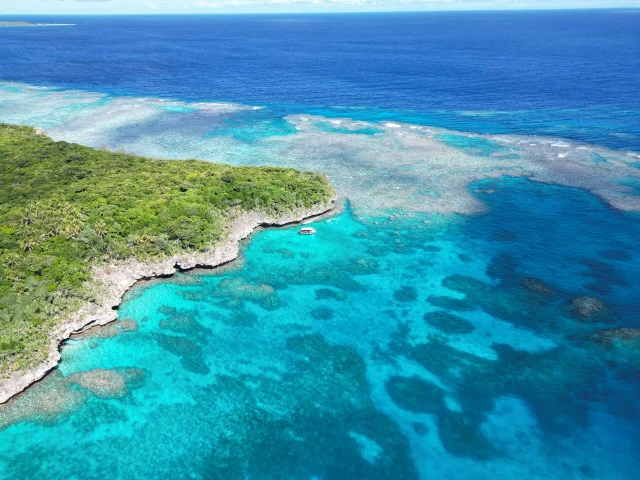 Pléiades du Sud in Ouvéa
Pléiades du Sud in Ouvéa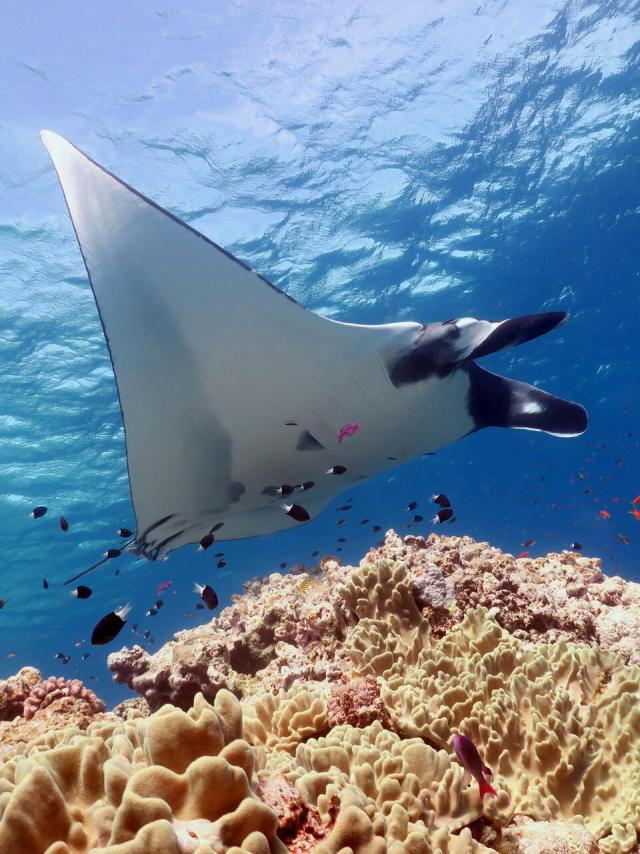 Manta ray, Ouvéa
Manta ray, OuvéaIn 1972, UNESCO established a convention to protect the world’s natural and cultural heritage. Member States commit to taking all necessary measures to preserve the integrity of listed sites. If these measures prove insufficient, a site may be removed from the World Heritage List.
New Caledonia is home to six UNESCO-listed sites, spread across the territory.